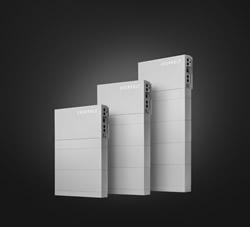Given market constraints, reducing wind measurement uncertainty at higher hub heights is crucial for the integration of taller, higher capacity turbines
More efficient turbines depend on the ability of developers to accurately assess the wind resource at higher hub heights.
As a growing number of wind energy assets across Europe near the end of their operational lifetimes, plans to upgrade and repower existing sites using larger, more efficient turbines depend on the ability of developers to accurately assess the wind resource at higher hub heights. However, current methods of data extrapolation from short on-site met towers lead to high levels of uncertainty, affecting the accuracy of both wind speed and wind shear estimates - and ultimately the chances of securing financing in a complex regulatory environment.
That is according to Vaisala, a global leader in environmental and industrial measurement. The firm recently conducted an extensive study to compare the accuracy of data collected by its Triton Wind Profiler remote sensing system to data from collocated met towers. The study, which evaluated over 50,000 hours of wind data from customer sites on four continents, confirmed that the portable Triton unit is as accurate for wind resource assessment applications as a traditional met tower.
During the study, Vaisala identified improvements in the level of certainty of hub-height wind speed using Triton Wind Profilers compared to met towers. Typically, wind speed and wind shear estimates produced at potential repowering sites are based on an extrapolation of data collected by existing met towers that do not extend up to hub height. However, on test sites, Vaisala found that mean hub-height wind speeds measured directly by the Triton system had uncertainties of 1.3% - less than half that of mean hub-height wind speeds extrapolated upward from collocated met towers (2.7%)."
In light of current market conditions, this uncertainty has the potential to influence the appeal of repowering projects to investors. This is particularly true in markets like Germany and Poland where competitive auction models are replacing feed-in tariffs or green certificate incentives. Also subsidy withdrawals and changes to planning rules in the key European onshore wind markets of Spain and the U.K. have affected investor confidence and the developers of both new and repowered projects must present a compelling case in order to secure financing.
"Repowering remains an attractive strategy for wind energy developers in markets where the operational fleet is starting to age," said Nihat Hunerli, Vaisala's new EMEA regional sales director, who has a decade of energy industry experience and was brought onboard to better support the unique challenges of the European market. "However, as subsidy frameworks and planning rules have changed, presenting a repowering project to financiers is becoming a tougher sell."
"That's why the reliability of revised, higher hub height resource estimates is increasingly important. In a climate of ongoing financial and regulatory uncertainty, eliminating resource uncertainty as far as possible will be crucial to the success of repowering projects."
"The value of a remote sensing system such as Vaisala's Triton is that it can be deployed to provide a much greater degree of early estimate certainty at higher heights than existing on-site met towers alone - and avoid the planning considerations and upfront costs of installing new taller towers."
Customers around the world are already using the Triton in place of or in conjunction with traditional met towers to reduce estimate uncertainty at hub heights up to 160 meters. The portable system is well suited to complex terrain and challenging climates with deployments in over 35 countries on six continents. One recent example, comes from Puhuri Oy, which deployed the Triton in remote areas of Finland where it has performed impressively under extreme cold climate conditions.
Furthermore, based on operational feedback from its international client base, Vaisala has continued to refine the product and its capacity for accurate higher height wind speed and wind shear calculations. In 2013, the speaker array on the SoDAR unit was upgraded, increasing the system's data recovery by close to 50% at hub heights of 140 meters, and by more than 100% at heights of 180 meters.
For more information on the Triton Wind Profiler, or to request a copy of the validation study, please click here.
Vaisala is an expert in wind measurement, project assessment, and energy forecasting, offering a wide range of services, including the project layout, energy estimate, and other consulting services needed for repowering wind sites. For more information, please visit www.vaisala.com/energy or meet us in Paris at Stand P04 during the EWEA Annual Event, 17-20 November.
Featured Product

